A small group day tour with a socially distanced difference today. Rather than using the minibus, we met on site in the morning and walked out to explore the dunes. As there were only a few of us, we then travelled on in convoy in the afternoon to visit a couple of different places. The weather was good – sunshine and blue skies for most of the day, although the light NE breeze had a slight chill to it, coming in off the North Sea.
We met in a small car park looking out over the grazing marshes. A couple of Red-legged Partridges were out in the middle of the field behind us and Skylarks were singing in the blue sky. A Red Kite circled lazily over the field on the other side of the road. We could see a Great White Egret on the grazing marshes way off in the distance.
Heading down the track, a Chiffchaff was singing and a male Blackcap flicked up onto the top of the hedge ahead of us. At the bottom, looking through the gap in the hedge we could see a pair of Grey Partridges in the next field, the male standing upright, its orange face visible above the long grass. A distant Spoonbill flew high west, presumably heading out onto the saltmarsh to feed. We could hear Bullfinches calling in the hedge and a Song Thrush was feeding out on the grass.
Continuing on down the track, the blackthorn is in full flower now, but the Lesser Whitethroats are not in yet. They are late this year, a lot of migrants seem to be delayed by the persistent cool northerly airflow we have had for the last couple of weeks. Out on the grazing marsh opposite, we could see lots of Greylags and Linnets, several each of Avocets and Lapwings. At least the Sedge Warblers are in already and singing – one was belting out its song from a patch of briar next to the path.
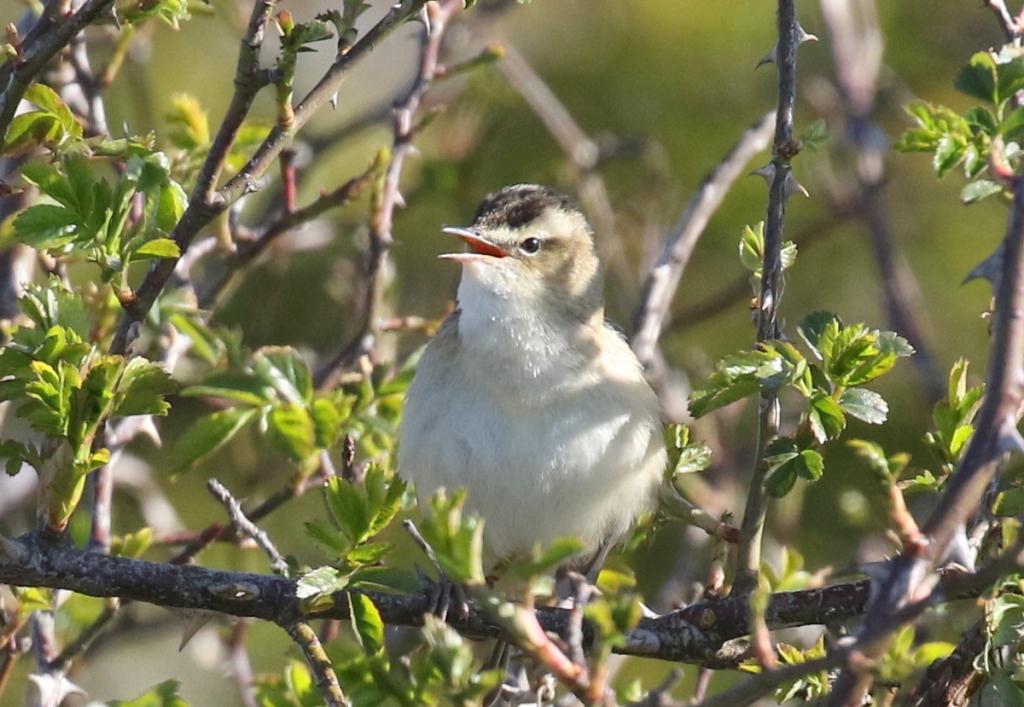
Cetti’s Warblers are resident here all year round, but they are always one of the most elusive of species, normally skulking deep in thick cover and heard more often than seen. So it was a surprise to see one perched up in the top of the brambles by the track today and even more of a surprise that it stayed there, out in full view, for several minutes.
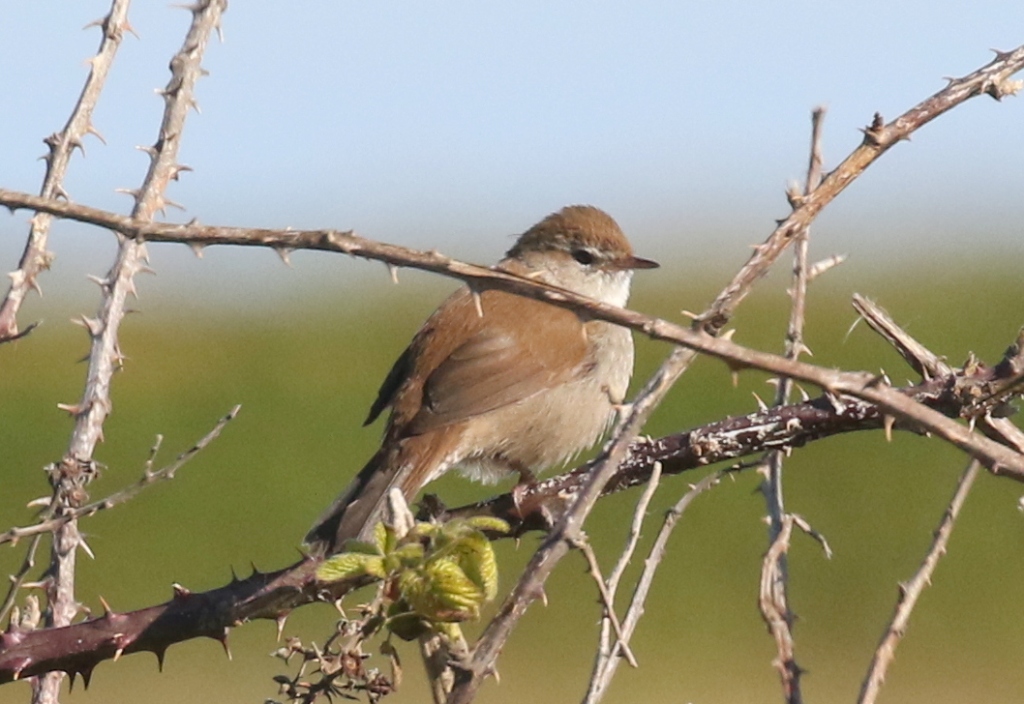
We could hear a couple of Mediterranean Gulls calling, and picked up a young bird (in its 2nd calendar year) circling high over the grazing marshes. Around the pools, we could see a nice selection of lingering winter ducks – Teal, Shoveler, a few Wigeon still – plus a drake Common Pochard. A Little Grebe was swimming in the water. A Little Ringed Plover appeared on the mud with a couple of Avocets and we could see its golden yellow eye ring. When it flew round, we realised there were another two Little Ringed Plovers further back and there was a bit of territorial aggression.
Up on the seawall, the tide was in. A small group of waders was visible roosting on a small spit on the saltmarsh, amongst the vegetation. In with a couple of Oystercatchers, Black-tailed Godwit and Redshank, we picked out one paler grey Knot. A Grey Plover further out in the harbour flew across.
Most of the Pink-footed Geese which spent the winter here have long since left, back to Iceland for the breeding season. Most of the geese here in the summer are Greylags, but distantly beyond the reedbed pool and half hidden behind a line of reeds we could just see two smaller geese, with darker heads, two lingering Pinkfeet. One clearly had a very mangled wing, and probably both birds had been shot and winged and are now unable to make the long journey back to Iceland. The Brent Geese always linger longer and there were still quite a few out on the saltmarsh, although it won’t be long now before they too are off, back to Russia for them.
A Reed Bunting perched on top of a bush on the edge of the reedbed calling. A small group of five Golden Plover circled in the distance, dropping down in front of dunes. We walked on to the last corner of the seawall for a closer look. A couple of Lapwings were displaying overhead, always a great sight and sound at this time of year. A big female Sparrowhawk was feeding on a kill out on the grass.
When we got to the boardwalk, we turned east through the dunes. This is usually a good place for migrants and to see migration in progress, but it was disappointingly quiet. There were lots of Linnets and Meadow Pipits but not much else today, not even any Wheatears in their favourite place or any hirundines on the move. The NE wind was obviously holding things back still. We continued on to the end of the pines and scanned out to sea. Two very distant Sandwich Terns were offshore. The view wasn’t bad too!

There were no obvious migrants in the bushes at the end of the dunes, so we stopped to scan the grazing marshes the other side. A small group of Curlews were feeding out in the grass and a slimmer, darker bird was nearby but obviously separate from them, doing its own thing. It was a lone Whimbrel, a passage migrant which passes through here in spring.
It would be more sheltered on the southern edge of the pines, so we carried on east along the path to see if there was anything fresh in along there. We heard another Sedge Warbler and a couple of Chiffchaffs singing. Then as we got almost to the crosstracks, we heard a Reed Warbler. It seemed to be close to a path in through the reeds, so we headed in to see if we could see it. It was keeping well down at first, but just as we were turning to leave it appeared in a low sallow bush. The first one we have seen or heard this year, a fresh arrival back from Africa just in the last day or two.
As we got back to the main path, we heard a Willow Warbler singing in the sallows ahead of us, and we could see it silhouetted against the sky. Having sung a perfectly normal Willow Warbler song several times, it then sang again and added some Chiffchaff song at the end. It is not unusual to find ‘mixed singers’ sometimes. A bona fide Chiffchaff was singing nearby and the Willow Warbler then set off after it, chasing it round and round, in and out of the bushes and all the way up into the pines beyond, which we haven’t seen them do before. Perhaps its mixed song was also leading to some species confusion!
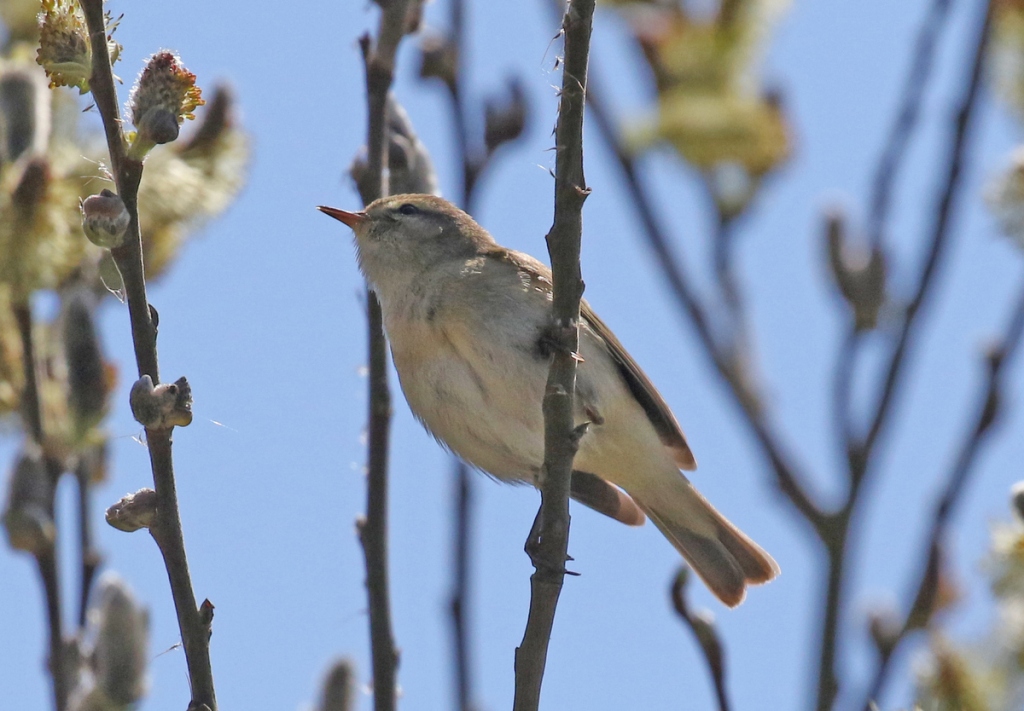
All hides are still closed at the moment, but we walked on to Joe Jordan Hide and looked over the wall below. A Great White Egret flew in from the west, low over the pools out in the middle. It had a noticeably dark bill, not the usually bright yellow dagger, which they develop just in the breeding season, a pitfall for the unwary!
Two Spoonbills were already on the further pool when we arrived, busy bathing and preening. After a while, another Spoonbill dropped out of the trees onto the nearer pool and started feeding, sweeping its bill from side to side in the shallow water. We had a good view of it now, we could see its shaggy nuchal crest and, when it lifted its head, its yellow-tipped bill, both indicating it was an adult in breeding condition.

After a snack and a short rest, we set off to walk back. The Willow Warbler was singing again in the same place we had seen it earlier. We stopped to listen to it, hoping to hear more mixed singing, but at first all we got was the beautiful descending scale of pure Willow Warbler song. Eventually, it switched and we got several variations, of mixed chiffs and chaffs.
Back on the seawall, the two Pink-footed Geese were a little easier to see now. Another Great White Egret flew past, heading out across the grazing marshes, it too sporting an all dark bill with bright facial skin.
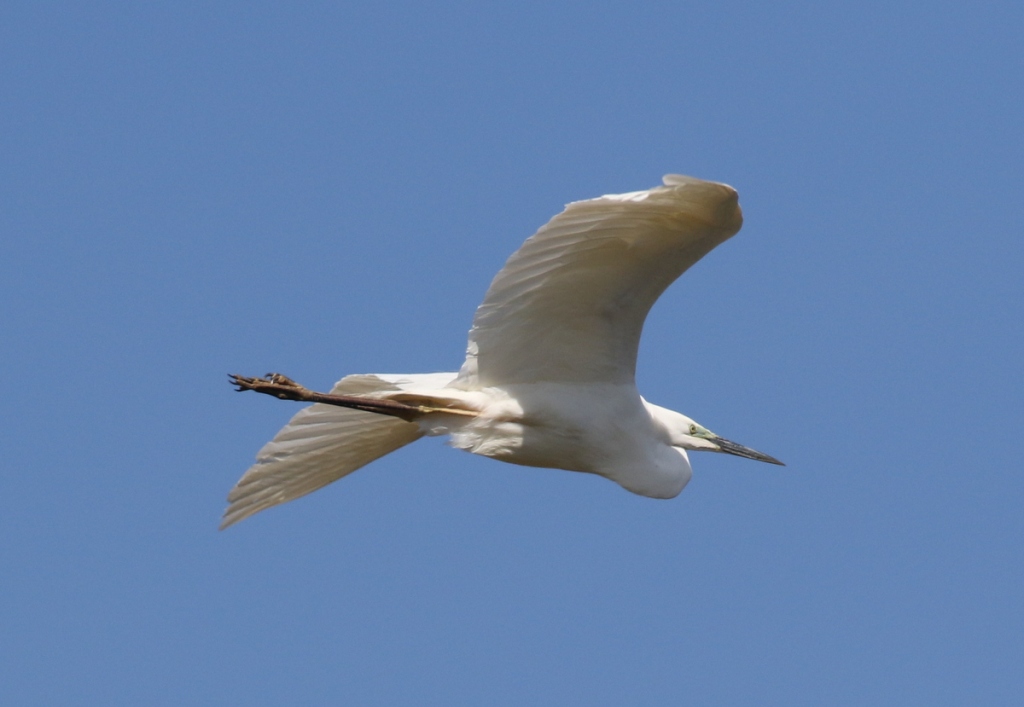
Back at the cars, it was time for a late lunch in the edge of the field, looking out across the grazing marshes, in the sunshine. Afterwards, we headed east along the coast road to Wells.
Scanning from the car park, we quickly picked out a Ruff on the closest pool, disappointingly grey and still not really showing any sign of acquiring breeding plumage. There were a couple of Common Snipe on here too.
At the back of the pool the other side of the track, a large white shape was another Spoonbill, standing preening. There were lots of gulls on here too and in among all the Black-headed Gulls, we picked out an immature Common Gull and two Lesser Black-backed Gulls, their yellow legs catching the sun as they swam past. A male Marsh Harrier drifted over, flushing quite a few birds from the water and attracting the ire of the local Lapwings, which chased it over in our direction.
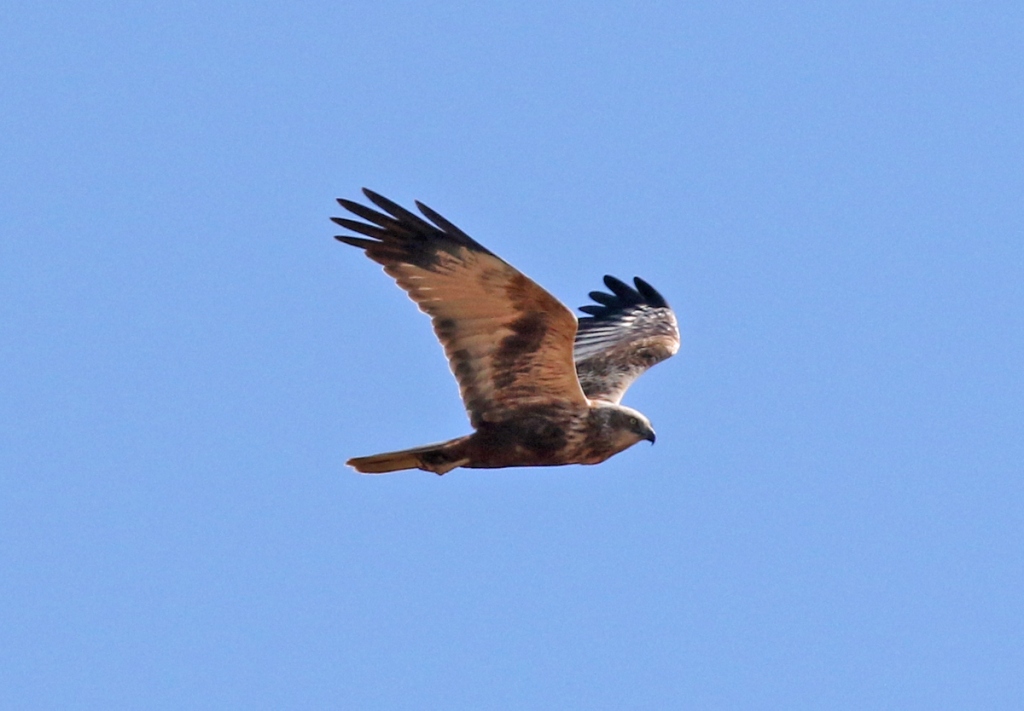
Two wagtails dropped in by the cattle pens. They both had grey backs and sharply demarcated black crowns, although one was slightly patchy in the middle. One stopped to bask in the sun and we could see the grey of its back extending down between its wings. Two White Wagtails, the continental equivalent of our Pied Wagtail, stopping off on their way north.
We walked on down the track to the far corner and looked back across the pool to the east. It didn’t take long for the Grey Phalarope to appear in its favoured corner, swimming out from behind the rushes. Still in grey non-breeding plumage, it looked like a diminutive gull from a distance, grey and white and swimming around on the water. Through the scopes, we could see its black mask. These arctic-breeding waders normally spend the non-breeding season out at sea off W Africa, and are rare here in spring. After northerly gales a couple of weeks, several were blown in and have lingered along the coast.
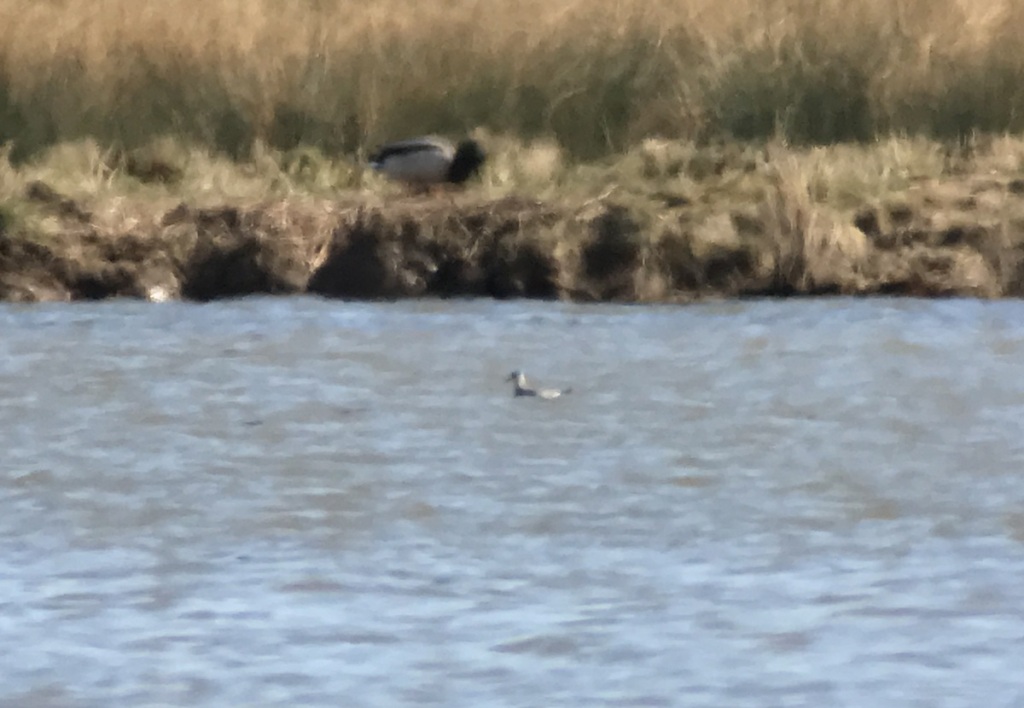
We walked on through the bushes, which were rather quiet, a distinct lack of migrants and freshly arrived warblers here too, a recurring theme it seems today. We climbed up onto the small bank overlooking the western pool and scanned the margins. Another male Ruff was over the back, this one starting to moult into breeding plumage with extensively black patterned head and neck.
A Swallow zipped over and was joined by a second over the field beyond. Then two Sand Martins appeared with them. Had they just arrived or have they been lingering here, finding insects around the pools? Our first hirundines of the day, and a very welcome sign that spring migration is still happening, birds are getting through despite the cold airflow.
A small wader flew up from the middle of the densely vegetated island – a snipe, but rather small and with a shortish bill, a Jack Snipe! It landed before anyone could really get onto it and disappeared into the vegetation on the far edge. We scanned the place it had landed and after a few seconds a Common Snipe walked out. Surely we didn’t get that one wrong – the first bird definitely looked too small?
We climbed up onto the seawall, a little further away but we had a better view of the island from up here. We could see the Common Snipe again, and then we saw some movement in front of it and the Jack Snipe showed itself. A bit smaller, and significantly more secretive, the Jack Snipe could completely disappear in the low vegetation but at times we had a great view of the two snipe species side by side. As well as being smaller with a shorter bill, we could see the Jack Snipe‘s more contrasting golden mantle stripes and the different head pattern, lacking the Common Snipe‘s central crown stripe.
We still had a little bit of time to play with so we headed back to the cars and decided to move on for one last stop. Further east still, we parked by the quay at Morston. There had been a Ring Ouzel in the field by the car park, but it had been spooked by a flyover Red Kite before we arrived and flown into the hedge. There were still several Blackbirds and Song Thrushes out on the grass.
While we waited for it to arrive, we walked on to the harbour, where a Whimbrel had been feeding on the mud right down at the front. We arrived just in time to see it spooked by a photographer, but thankfully it landed on the saltmarsh behind. A little later, another one appeared on the mud on the far side of the channel. We could see its striped crown. A Greenshank was busy feeding in the channel a bit further along.
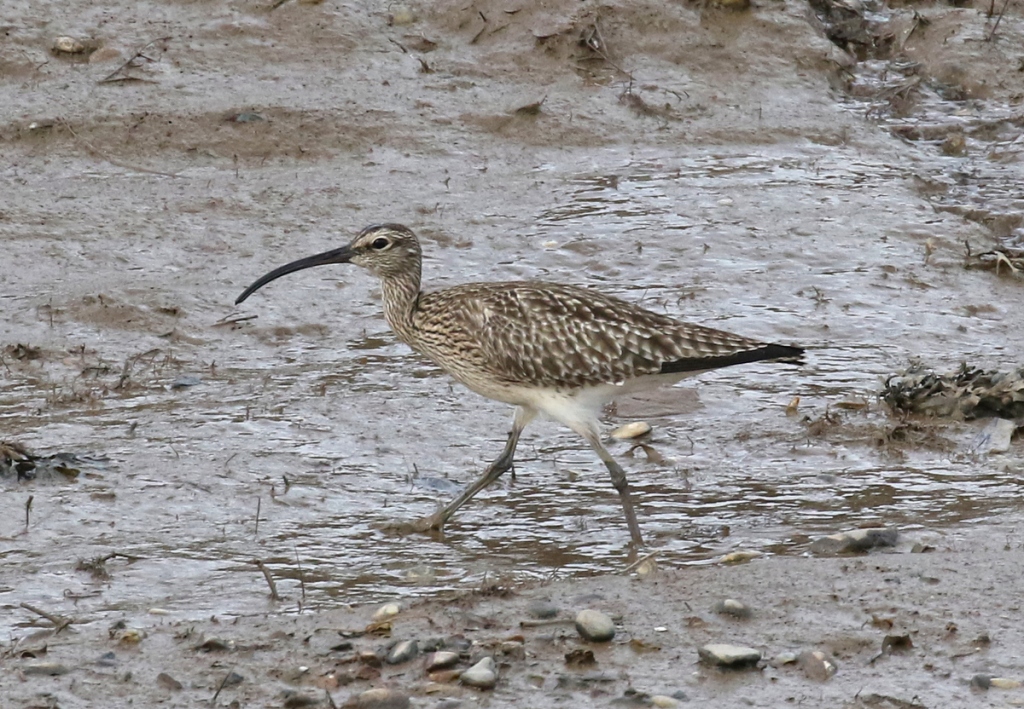
There was still no sign of the Ring Ouzel emerging from the hedge, but two more Ring Ouzels had been reported earlier, a little further along the coast path, in the horse paddocks. We walked down for a look, but we couldn’t see any there either. Then we received a message to say the Ring Ouzel was back out by the car park. We turned and could already see it distantly on the short grass, so we walked back for a better look.
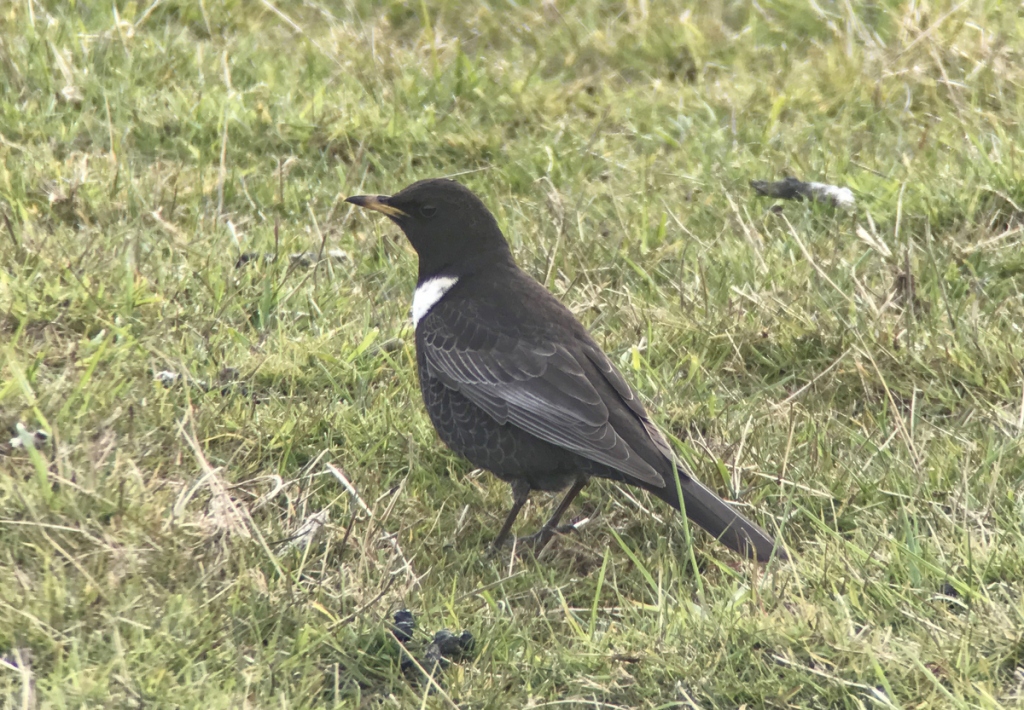
The Ring Ouzel performed very well now, feeding on the grass. A smart male, like a Blackbird with a bright white gorget, pale silvery wing edges and scaly fringes below. Ring Ouzels are scarce passage migrants here, these ones probably on their way from their wintering grounds in the Atlas Mountains, up to Scandinavia for the breeding season. They are normally mountain or moorland birds, but stop off here in fields along the coast before heading out across the North Sea. One we had hoped to see today, and we managed to squeeze it in right at the last.
The Red Kite drifted over again and the Ring Ouzel flew back up into the hedge. It was time for us to call it a day and make our separate ways home.
















